What Do Cameras On Traffic Lights Do
UPDATED: Jul 6, 2021
Advertiser Disclosure
It'southward all about you lot. We desire to assistance you make the right coverage choices.
Advertiser Disclosure: We strive to help y'all brand confident car insurance decisions. Comparing shopping should exist like shooting fish in a barrel. Nosotros are not affiliated with any 1 car insurance company and cannot guarantee quotes from whatsoever single company.
Our partnerships don't influence our content. Our opinions are our own. To compare quotes from acme car companies please enter your Zilch code higher up to use the free quote tool. The more quotes you compare, the more chances to save.
Editorial Guidelines: We are a free online resource for anyone interested in learning more about auto insurance. Our goal is to be an objective, third-party resource for everything machine insurance related. Nosotros update our site regularly, and all content is reviewed by auto insurance experts.
Here'due south what you lot need to know...
- Traffic cameras and auto-enforcers are turning up everywhere
- There are many dissimilar kinds of cameras watching our roads
- Motorcar-enforcement cameras certificate violations and send citations
- Basic traffic cameras are usually in place to monitor traffic patterns
- Although ruled constitutional, many Americans want them banned
- Learn what to await from the various cameras on our public roads
No matter how much controversy they cause, no matter how many courtroom cases are filed against them, cameras on our public roadways are not just unavoidable, they're rapidly growing in numbers .
The data shows traffic cameras decrease accidents and save lives, all while making AND saving coin, so it's articulate these robo-cops will always win.
Read on and then you know what to expect from these eyes in the skies.
And be sure you lot have the best car insurance available. Compare rates amongst several companieshere!
1. At that place are Many Different Types with Far Dissimilar Purposes
Non all cameras serve the same purpose. Below we volition provide descriptions of the most common traffic cameras you may run beyond.
Red Light Cameras
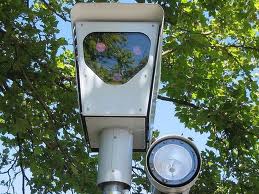 The most common machine-enforcer on the roads today is the cherry-red lite photographic camera.
The most common machine-enforcer on the roads today is the cherry-red lite photographic camera.
As of March 2017, there were 24 states and 426 American communities currently operating red low-cal cameras in at least one location.
How They Spot You
These cameras are activated when there is motion passing the stop bar after the signal turns red. Well-nigh ruby-red-light cameras on the roads today capture a 12-2nd digital video of the violation, along with two images of the license plate.
The Florida DOT created the below diagram to illustrate how their red-light cameras work: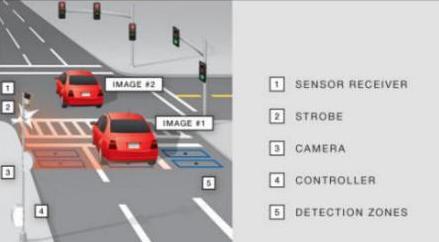
How Yous Spot Them
The most common red light enforcers have a camera housed in a box next to a light that drivers tin can see wink as it takes pictures.
Red light cameras are usually positioned on the side of the route facing the intersection, and most states postal service signs to warn drivers simply earlier the intersection or side by side to the camera itself.
Speed Cameras
Hoping to irksome down drivers with a pb foot are the 2d most common auto-enforcers out there today: speed cameras.
With 142 communities inside 12 states using speed cameras every bit of March 2017, these automobile-enforcers shouldn't be ignored.
Designed with the same radar and laser applied science used by police force enforcement, these cameras are triggered when a vehicle exceeds well-nigh 10 mph over the documented speed limit.
How They Spot You
Once triggered, the photographic camera captures images of the license plate, and a video of the incident is unremarkably recorded as well for boosted proof. The date, fourth dimension, speed, and location are all archived with the camera's recording.
The Chicago DOT provided a helpful "How it Works" explanation and diagram on how their speed cameras function:
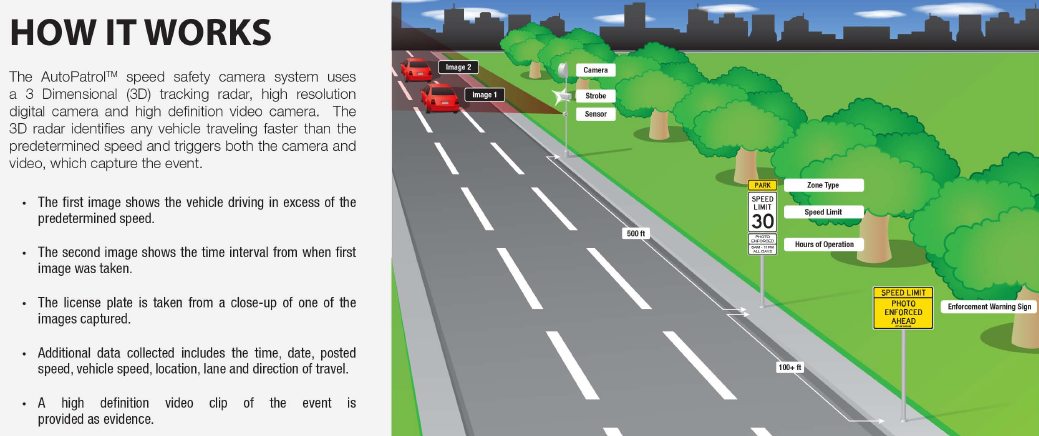
How You Spot Them
Speed cameras can be found in beefy, brightly colored boxes or expect more basic with just the protected camera on pinnacle of a alpine pole.
Like carmine light cameras, many speed camera sites have warning signs that drivers can see just before the camera has eyes on them.
Stop Sign Cameras
All the hype must become to red lite and speed cameras because it's near incommunicable to find any data on finish sign cameras. The state laws on them aren't even listed by the IIHS or GHSA.
Just two locations in the U.Due south. take stop sign cameras listed on their DOT websites: California and the District of Columbia.
DC.gov states that it has eight working stop sign cameras and even lists their verbal intersection locations.
How They Spot Y'all
End sign cameras use radar to detect if vehicles stop, whorl through, or drive right past the terminate sign. It is not specified how many images are taken of the vehicle or if video clips are also recorded.
How You Spot Them
These cameras are unremarkably institute in large boxes. Like the other machine-enforcers, most will have a sign nearby alarm motorists that information technology is a camera-enforced stop.
Schoolhouse Bus Cameras
The newest form of auto-enforcers on the roads today aren't stationary. They grab drivers illegally passing school buses.
Fifty-fifty states, like Wyoming, that don't utilise any other type of motorcar-enforcers are having school bus cameras installed. In fact, in 2014, Wyoming became the showtime country in the nation to mandate that every one of its public school buses has cameras attached.
By 2015, lxx schoolhouse districts had school motorbus cameras installed, 13 states already had laws that allowed them, and 7 more states were working on bills to get them canonical.
How They Spot You lot
The cameras are activated when the bus stops and deploys the cease signs and flashing lights. They capture photographs of the vehicle and a brusque video of the violation, which includes time, appointment, and location postage.
How You Spot Them
These auto-enforcers are institute on the sides of school buses. They are normally in a blackness protective box. They expect different depending on the company that installed them, but they all function in a similar fashion.
Protecting Children
Before schoolhouse bus cameras, a constabulary officeholder would have to speed by the schoolhouse bus in order to take hold of a driver, which merely put the children in more than danger.
In 2014, the National Association of Country Directors of Educatee Transportation Services followed 97,000 bus drivers in 29 states and recorded over 76,000 vehicles illegally passing school buses each day.
Hopefully, these cameras help to keep the innocent youth of our nation prophylactic equally they ride to and from school each twenty-four hour period.
Dummy Cameras
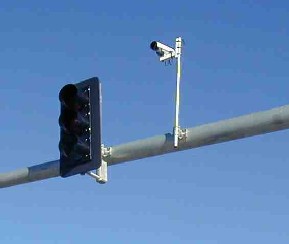
Pseudo-cameras are used to get drivers to obey the police, without law enforcement having to lift a finger.
The state that is well-nigh commonly known for using dummy cameras is New York.
NY DOT publicly admits to frequently moving auto-enforcers, likewise as using fake cameras so that motorists can't memorize where the working ones are.
Maryland has been using dummy cameras since 2013 and claims they serve another purpose. Police force Chief McLaughlin of Laurel said:
"These cameras are a way of showing it's not about the money."
Traffic Surveillance Cameras
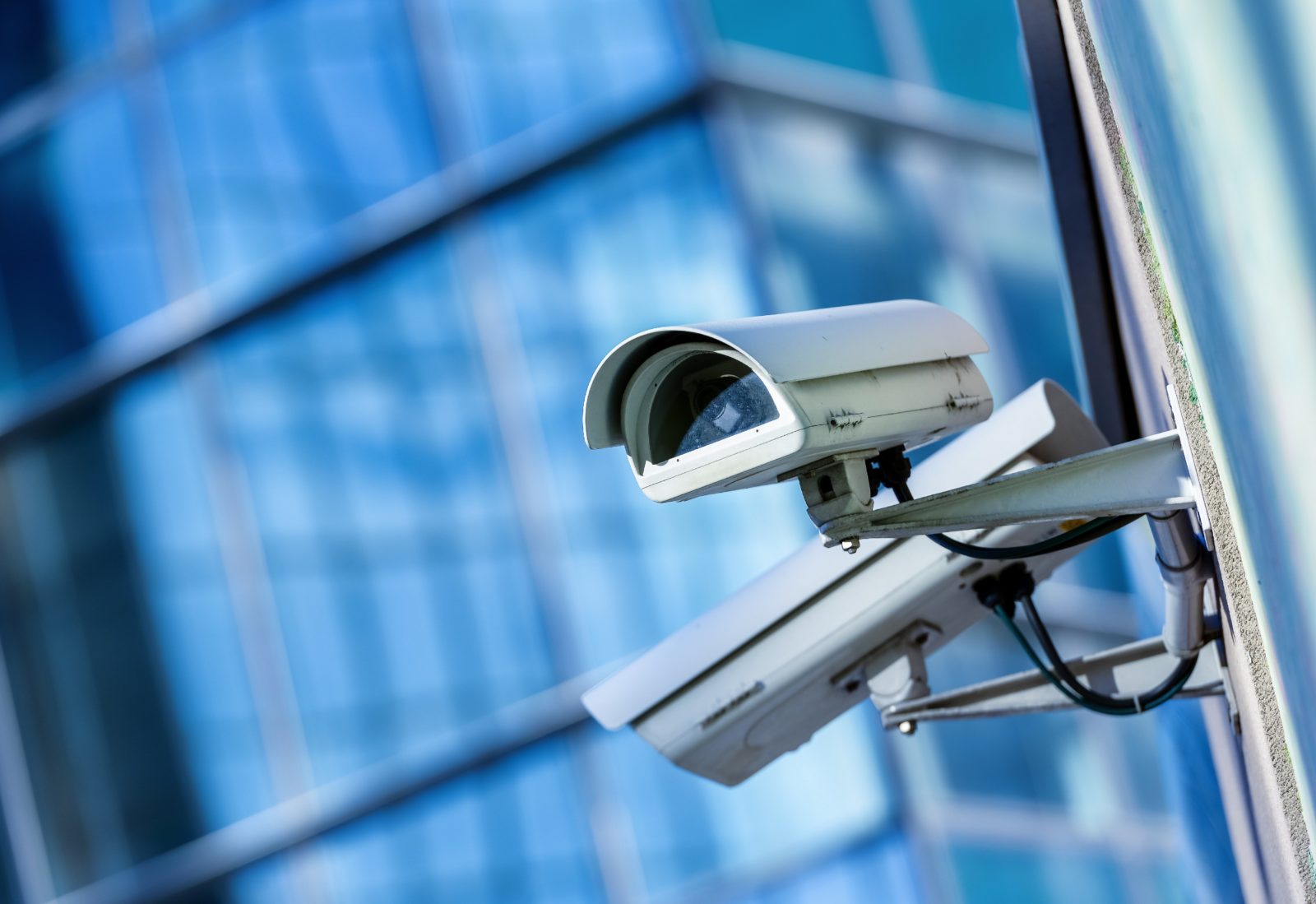
Surveillance cameras cause quite the upheaval fifty-fifty though they will never cost anyone an expensive, unexpected moving violation.
Many people spot traffic cameras at various intersections and assume they are beingness spied on and recorded against their will.
In addition to being disliked for infringing on privacy, traffic surveillance cameras are often confused with ticket-generating car-enforcers.
Their Purpose: Vermont
According to Joshua Schultz, the project director at the Agency of Transportation in Vermont, the truthful purpose of these cameras is for: "situational awareness"— monitoring traffic patterns, accidents, and poor road conditions.
The VT cameras shop a snapshot taken by each photographic camera every five minutes, which is available to exist viewed publicly on the "VTrans" website.
Lieutenant Garry Scott of the Vermont State Police force said his agency would request access to the cameras and their information only in the effect of "something horrific, like a major crash or an Bister Alert."
Their Purpose: Missouri
To ease residents' worry or anger, the Missouri DOT provides a lengthy explanation of why they employ traffic surveillance cameras.
MO's DOT assures readers that their traffic cameras are installed for the sole purpose of "detecting the presence of vehicles in order to provide the best distribution of green time based on traffic need."
With the help of the below prototype, they illustrate that their cameras but focus on vehicles as they enter predetermined zones.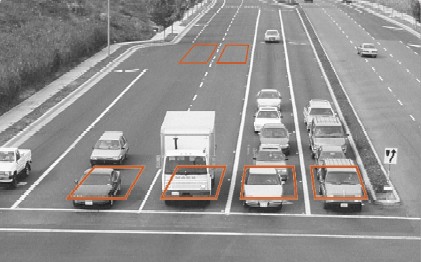
Unlike speed, cherry-red light or finish sign cameras, traffic surveillance cameras are much less beefy and colorful, and they are fastened to the traffic low-cal pole.
Gratis Car Insurance Comparison
Enter your Cypher lawmaking below to view companies that accept inexpensive car insurance rates.
Secured with SHA-256 Encryption
two. They are Used Worldwide
Automobile-enforcers non only didn't originate in the U.Southward., but they are as well more prevalent in other countries.
Began Elsewhere
Ruby low-cal cameras were get-go developed in the Netherlands and were fix to exist sold on the market as early on as 1965. Other countries, like Israel, quickly followed suit through the belatedly 60s.
The showtime pecker approving red light cameras in the U.S. wasn't even signed until almost 30 years subsequently in New York City in 1993.
As reported by the IIHS: Auto-enforcers aren't merely used in the U.Due south. In Canada, Australia, Austria, State of israel, the netherlands, Norway, Singapore, South Africa, Taiwan, and a number of other countries in Europe and the United Kingdom, there are many more than cameras rolling per capita OUTSIDE of the United states.
In fact, car-enforcers are generating the majority of the moving violations in some countries. For example, in the United Kingdom, about fifty per centum of all speeding tickets result from what they call their "safety cameras."
Creative Monitoring
While the U.S. is getting flooded with backlash and legal claims against its traffic cameras, other countries are getting artistic on what violations their cameras tin can catch.
In holland and Israel, they have traffic cameras set up to monitor tailgating. And London is working on cameras that can catch motorists running blood-red lights and speeding all with but ane device.
3. They are Surrounded by Controversy
The American public hasn't taken well to auto-enforcers since they began beingness used in the U.S. in the 90s.
An article posted by NPR states: "If enforcement cameras are all the rage for roads, blowback from drivers is the new route rage."
Below are the 10 about common arguments against traffic cameras:
- They make motorists slam on their brakes, which increases rear-end collisions
- They violate due procedure because there is no alive witness
- The vehicle owner is unfairly penalized when he/she wasn't driving
- They are a violation of privacy
- The citation is unlawful because it is not given in person
- Their real purpose information technology to fill government budget holes
- The delay in receiving the ticket makes challenging it almost impossible
- The coin that goes to the private contracting visitor creates a conflict of involvement
- The locations, signage, and light-timing are called and set to trap motorists
- More than surveillance means more possibilities for privacy abuses
These are all fair arguments that are each addressed in the post-obit department below.
These cameras document our mistakes, then deliver an unexpected, humiliating guilty charge along with a mandatory fee that was never part of the monthly upkeep. Car-enforcers are jump to cause a level of outrage.
iv. They are Continually Ruled Legal and Constitutional
There have been rulings from the 2nd, fourth, fifth, 6th, seventh, 9th, and 11th U.S. Circuit Courts of Appeals thatall found red light and other rubber camera programs to be legal and constitutional.
Below, the 10 most mutual arguments against the cameras are addressed:
#1 – Rear-Terminate Collisions
Yes, in some cases auto-enforcers cause motorists to slam on their brakes — increasing rear-terminate collisions — but they reduce the deadlier T-os or broadside crashes, which are more common at intersections.
#2 – Due Process
In that location is unremarkably not a alive witness at the time of the violation when auto-enforcers are used, but by providing photographs (and often video) for testify and past having a alive, trained professional person review the recorded incidence, there is no violation of due procedure.
#3 – Vehicle Possessor
In 2015, the Iowa Supreme Court ruled issuing citations to vehicle owners or lessees — regardless of who was driving — constitutional. The courts encourage individuals to keep this in mind and be extra cautious when lending their vehicles to others.
#4 – Privacy Laws
Traffic cameras take been ruled to non be a violation of privacy numerous times in the U.S. courts.
According to a 2009 ruling by the 7th U.Southward. Circuit Court of Appeals, "no one has a fundamental correct to avert existence seen past a camera on a public street."
Cameras only take photographs or video of a vehicle when the motorist has violated a conspicuously posted traffic police force, therefore endangering others.
#five – Officer Involved
Just like a parking ticket, at that place are no laws stating that a moving violation needs to be given in person. An automobile-enforcer-defenseless offense tin be recorded by a camera, confirmed by a constabulary officer, and mailed to the vehicle owner.
#6 – Coin Makers
Fines incurred by car-enforcers definitely assistance local governments financially, but not as many people think. Simply most 20 percent of that money goes back to the government; the rest goes to the private companies that install and own the cameras.
#vii – Challenges Accustomed
Since the testify is reviewed before being mailed, there is definitely a delay before the vehicle owner receives the citation. However, just like with whatever moving violation, the individual has adequate time to challenge the ticket and announced in courtroom.
#8 – Legal Partnership
The local city and country governments must pay individual companies to install and manage the traffic cameras because they don't have the manpower or expertise to run them themselves. This is not a disharmonize of interest, but rather a company getting paid to increase the safety of our public roads.
#9 – Regulated Employ
The locations called for auto-enforcers are areas in need of improvement that have become unsafe. States are required to follow the Federal DOT Manual on Uniform Traffic Control Devices for Streets and Highways in regard to all these matters.
#10 – Helpful Surveillance
The cameras on our public roads are not designed to film to the detail and duration people fear — neither the caliber of camera or amount of storage available would allow for information technology.
Auto-enforcers simply record the violation as it's happening, and traffic cameras only show live feed for road condom monitoring
The defensive arguments, courtroom cases filed, and fears traffic cameras cause are all valid, but with some research, we tin all become more knowledgeable on the true functions and abilities of these cameras.
Free Car Insurance Comparison
Enter your ZIP lawmaking below to view companies that have cheap car insurance rates.
Secured with SHA-256 Encryption
5. Their Purpose Isn't to Replace Humans
The cameras spread across the U.Due south. are non there so we tin take fewer police enforcement officers keeping our roads rubber.
Cameras are put in place to supplement the tireless efforts of the men and women serving our communities.
Non Enough Patrols
There could never be enough patrols on the roads to enforce all of the speed limits and intersection signs and signals. With cameras, motorists are much more likely to get caught if they choose to ignore clearly set safe laws.
Saving More Lives
Cameras enforce traffic laws without putting more people in danger. Equally the IIHS explained:
"Without cameras, enforcement is hard and frequently dangerous. In gild to stop a cherry lite runner, officers usually have to follow the vehicle through the red calorie-free, endangering themselves as well as other motorists and pedestrians."
Bigger Issues
Cameras tin can brand our roads and our communities safer. Rather than having officers out monitoring speeds and intersection stops, they can be at the station training, educating, and being available to respond to calls of a much greater magnitude.
vi. Their Purpose Isn't to Spy on You
When people see cameras perched above them, it is natural for them to feel watched.
There are many cameras in the world gear up for the sole purpose of watching. But, traffic cameras are simply not designed or funded for that purpose.
When we reached out to Louisiana's DOTD, Janice P. Williams, P.Due east., Chief Engineer, stated,
"LA DOTD utilizes cameras to monitor traffic and to activate signals. LA DOTD utilizes cameras to provide real-time information on traffic conditions. We also use them to tell the signal to change when a vehicle is at an intersection. Nosotros do non ain any cameras being used for traffic enforcement. None of our cameras are used to record data."
Eyes on the Road
Traffic surveillance or monitoring cameras are there then that specific parts of the public roadways can exist viewed for traffic patterns, accidents, severe atmospheric condition, etc. Machine-enforcers are turned on when someone breaks a clearly posted law that all drivers hold to follow upon getting backside the bike.
Citation Images
The images taken by these cameras are of your vehicle and license plate. In much of the U.S., the driver doesn't fifty-fifty factor into the equation. Only in Arizona, California, Oregon, and Colorado is at that place a photograph taken of the driver as part of the evidence.
Public Roads = Public Property
People shouldn't experience that these safety cameras invade their privacy. As stated by the IIHS:
There'due south no reason to expect privacy on a public road. Driving is a regulated activeness, and people who obtain licenses are agreeing to bide by certain rules.
Shalom Hakkert, a visiting institute scholar studying automatic enforcement practices around the world, explained the purpose of these cameras:
"The goal of automated enforcement, with its huge capacity, is to significantly increment the objective and perceived chances of being caught, thus creating a alter in behavior that will interpret into a crash reduction."
7. There's No Map or Directory of Them
"We the people" like to be informed and feel a semblance of command in the situations that affect our daily lives.
One of the things that really bothers people almost the cameras popping up all over our public roadways is the very little information we take on them.
Many Unknowns
On most roads today, a motorist is spring to see a handful of cameras in one brusk drive. Someone who hasn't already done extensive research on the subject area wouldn't know the purpose of those cameras.
It'southward unlikely a curious citizen will notice answers to thesenear common questions:
- Was that camera live?
- Was that a police force-enforcing photographic camera?
- What was that camera watching or looking for?
- Who views the material documented by that photographic camera?
- Are the images and videos (including me!) saved forever?
Nosotros all have the "right" to know the answers to such questions when we see cameras above united states, simply unfortunately, the information on each specific camera is not readily available or like shooting fish in a barrel to find.
No Available Funds
Chicago, D.C., Missouri, New York, and Virginia have dedicated DOTs that practice an excellent job of explaining what types of cameras they apply, how they piece of work, and in some cases, even where they are located, but most states don't have the time and/or money to update their websites in such detail.
Chemical element of Surprise
Sometimes the lack of data is on purpose.
N.Y. DOT is known for frequently moving cameras around and using dummy cameras so that motorists tin't memorize their locations.
Free Car Insurance Comparison
Enter your ZIP code below to view companies that accept cheap car insurance rates.
Secured with SHA-256 Encryption
8. Non Every Land has Them . . . Withal
There is no directory, map, or list of them, but every land uses traffic surveillance cameras of some kind —even if simply for bones traffic and weather updates. But not every state allows constabulary-enforcing cameras.
According to the March 2017 update from IIHS, at that place are only three states in the U.S. that prohibit speed or ruddy calorie-free cameras without exceptions: Maine, Mississippi, and W Virginia.
Darin Bergquist, Secretary of Transportation of Due south Dakota, told united states,
"South Dakota does not have sufficient problems to warrant [traffic camera] use."
Other states may not employ them for different reasons, simply this practicality demonstrates states are using prudence when deciding when and where to implement camera apply.
As of March 2017, there were 12 states that use speed cameras, 24 states that utilise ruddy-light cameras, and 14 states that utilize both. All of the U.S. might non currently employ machine-enforcers, but they are rapidly spreading.
nine. They Save and Brand Coin
By preventing motorists from running red lights and terminate signs and from driving faster than posted speed limits, car-enforcers relieve lives and reduce injuries, which in turn saves a whole lot of money.
Saving Money: Accidents
The NHTSA reported that the 33,780 traffic fatalities in 2012 toll our order $216 billion. If auto-enforcers continue to decreased traffic deaths by about 25 percent, our nation would salvage about $54 billion annually!
A moving violation will always cost less than a infirmary pecker, totaled car, or funeral.
Saving Coin: Human Power
Traffic cameras also save money by cutting down on the law enforcement needed to actively patrol our roads.
As stated by the IIHS: "The manpower required to police intersections on a regular basis would brand information technology prohibitively expensive. In contrast, camera programs can pay for themselves by requiring people who break the law to shoulder the toll of enforcing it."
If a photographic camera can sit down on location and be effectually-the-clock ready to record violations, why pay more than coin to have an officer risk his or her life to do the same thing less efficiently?
Cash Cows
They also make money — quite a flake actually. In 2013, Florida's red-calorie-free cameras collected $52 million, Cleveland fabricated $five.8 meg from cameras in its school zones, and in 2014, Montgomery County made $16.6 one thousand thousand from its speed cameras.
These are only a few examples of the 570 communities with active cameras across our nation.
Coin Motivates
1 of the biggest complaints is that auto-enforcers are installed for the coin. While the income isn't the only reason, it'southward certainly a do good to local governments.
People may feel the motives are wrong, simply the fact that these cameras make money volition only encourage more to be approved and installed.
As a 2009 7th Circuit Court of Appeals instance explained, "a arrangement of photographic evidence reduces the costs of police force enforcement and increases the proportion of all traffic offenses that are detected . . . That the metropolis'south system raises revenue does not condemn it. Rather, a organisation that simultaneously raises coin and improves compliance with traffic laws has much to recommend it."
Or do they…
ten. They Reduce Crashes and Save Lives
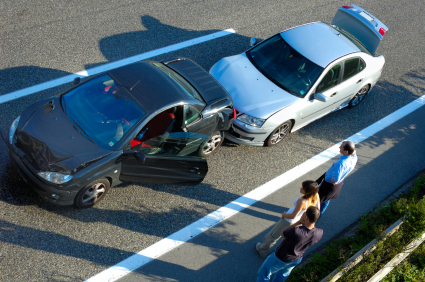
Traffic cameras are set upwardly across our country to make our roads safer. Georgia's DOT confirmed this. We contacted Andrew J. Heath, P.E., State Traffic Engineer, who said,
"Georgia DOT has partnered with local jurisdictions on the installation of cameras equally an additional countermeasure to reduce the severity and frequency of severe crashes at select intersection."
Proven Results
7 years of information from 50 intersections in Houston shows that cherry-low-cal cameras reduced collisions by most 28 percent, and another 7-twelvemonth-study in half-dozen Virginia communities found an even greater 42 percent decrease.
Between 2005 and 2013, crashes of all types were down at Chicago intersections suited with cameras:
- Right-angle (T-bone) crashes down by40 percent
- Rear-terminate crashes down by 18 percent
- All crashes at those intersections downwards byxxx percent
The Institute for Transportation Research and Education at NC Country found Raleigh's cameras to exist decreasing mortiferous collisions as well:
- Correct-angle crashes down by42 percent
- Rear-end crashes down by25 pct
- All crashes down by17 percentage
In a written report performed on crash data from 2004-2008, in 14 of the largest U.Due south. cities, IIHS found:
Red-calorie-free cameras saved 159 lives and reduced traffic fatalities by 24 percent.
The statistics make information technology pretty hard to be against cameras on our public roadways.
Accurate and Reliable
"The research is conclusive that they brand intersections safer," says Jackie Gillan, president of the Advocates for Highway and Motorcar Safety.
"If you run a red light and put somebody in danger, I call up a ticket is a small price to pay."
Cameras are arguably the most reliable and accurate police force enforcers available today.
"When you're taken to an emergency room, everybody wants the latest technology to relieve their lives. Well, this is the latest applied science to save your life."
The more you learn virtually the cameras on our roads today, the more you'll realize their far-reaching benefits.
Simply enter your zipcode below to comparison shop for car insurance now!
Related Links
Source: https://www.carinsurancecomparison.com/traffic-camera-facts-you-should-know/
Posted by: dixonsatereat.blogspot.com



0 Response to "What Do Cameras On Traffic Lights Do"
Post a Comment